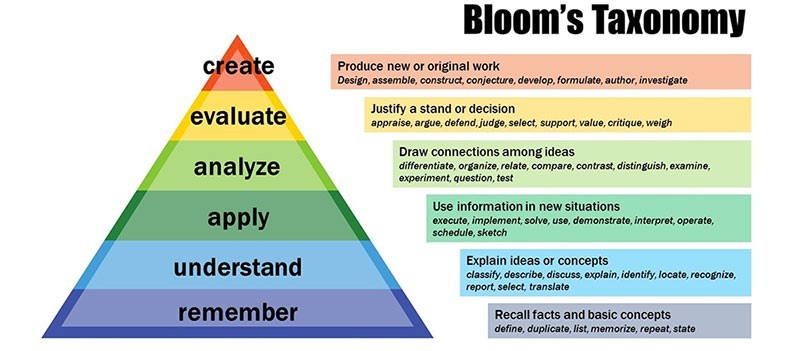e-Learning Ecologies MOOC’s Updates
Active Learning / Active Meaning Making
Active Learning concept stresses in the active intellectual engagement of the learners with the content. The basic philosophy is based in ‘a recalibration of the balance agency’ Cope and Kalantzis (2017) so that the learners adopt roles of Knowledge produces instead of knowledge consumer. The approach is contrary to traditional education where teachers are considered the knowledgeable person and learners as mere receivers of the content – mostly staying passive listeners. Active Learning requires learners engage with the content from the point of their existing knowledge and through discussion and interaction they reach to or beyond the stated learning outcomes. Thanks to mnemonic devices that we have started to rely less on our long term memory, which spared our mental abilities to focus more on the analyzing matters.
One opportunity that is available to us due to the contemporary technology is the MOOC platforms where learners are engaged in a professional discourse to discover new vistas of possibilities related to the theme/concept under discussion.
Griffith and Burns (2012) ref to six foundations for an engaging lesson as stated by Professor Csikszentmihalyi:
- Tasks are appropriately challenging
- Teacher input is minimal
- Class have the necessary learning skills
- Goals are clear and worthwhile
- Feedback is immediate
- Tasks are intrinsically motivating.
These foundations are though difficult to manage in a traditional classroom, however, there are more opportunities to hit most of them using digital technologies i.e., MOOCs. For example, MOOCs offer peer-to-peer feedback and assessment and provide a mechanism/functionality to achieve so; Teacher input is bound to be minimal once the task or discussion has been announced; Modular goals are clarified in the beginning of a module using MOOCs; Intrinsic motivation comes through the learners initiated posts or Updates; etc.
Looking at Blooms Taxonomy, it is clear that when learners get engaged with the matter using Higher Order Thinking Skills, they tend to learn more. “Active knowledge making practices underpin contemporary emphases on innovation, creativity, and problem solving – quintessential "knowledge economy" and "knowledge society" attributes” Coursera Resource 2E.
Image Soucrce: http://nursingeducation.lww.com/blog.entry.html/2016/11/20/what_is_active_learn-J77f.html
Idea of New Learning as compared to Didactic teaching presented by Kalantzis and Bill (2012) is essential in changing the old mindset of teaching and learning. It makes one think how new technologies are changing the pedagogical framework of our education. It has, in many ways though, already changes the way our young learners are taking benefit of internet, blogs and social media. I have found Edmodo, for example, a good starting point to engage learners in a focused discussions and reviewing peer work.
Gamification, for example, using Minecraft is has the ability to engage contemporary learners in creative ideas, making decision and presenting ideas they want, all this is done is sheer collaboration with other fellow learners. Using Minecraft, I once engages grade VI learners in making virtual spaces of important building present in the city. They decided to go for Faisal Mosque located in Islamabad. For the task they decided to visit the place, take measurements, and observed design patterns. They came back, had a thoughtful discussion on design, procedures to develop virtual building, distributed tasks amongst themselves and finally made one. I would have never thought that they will ever talk about concepts like ‘to scale’, ‘similar patterns’, ‘as references from another place’, etc. They work in a shared online space, collaborated to make decisions, and commented on each other’s progress and performance while achieving the goal collectively.
The whole process was as if real builders and designers were working together. The record of their discussion involved keywords which were beyond the stated learning outcomes and goals.
References
Cope, B., and Kalantzis, M. (2017). Conceptualizing e-learning. In B. Cope and M. Kalantzis (Eds), e-Learning Ecologies. New York: Routledge.
Griffith, A., Burns, M. (2012). Outstanding Teaching: Engaging Learners. Crown House Publishing.
Kalantzis and Bill (2012), New Learning: Elements of a Science of Education, Cambridge University Press, second edition.



This specific would seem to be utterly most beneficial. Each one of these modest tips can be designed with a number of backdrop tips. I favor which will much. บาคาร่า
Thank you for your help, I was already desperate to find the answer, but you got my blog very much Offer Financing to Customers
This website and I conceive this internet site is really informative ! Keep on putting up free gift cards code generator and free gift cards code generator and free gift cards code generator
I like and fully support the idea of active learning and submerging into an environment where active learning happens naturally due to a motivation and personal reasons.
I think being able to actively learn on your own provides with an opportunity to perceive new knowledge more efficiently. Developing this skill from early ages by offering specific kinds of assignments and by providing students with the best environment is beneficial longterm. The skills a student develops in early years of life will develop and establish a solid foundation for the upcoming lifelong learning.